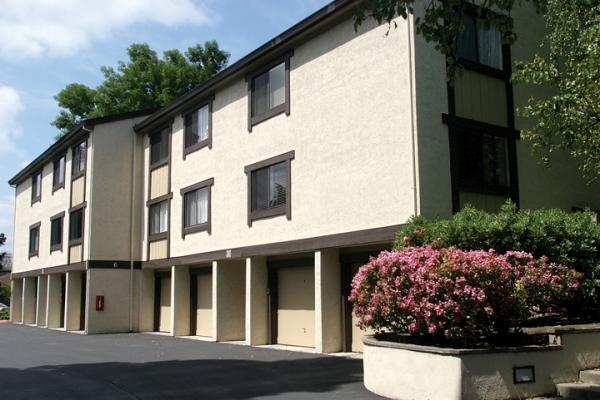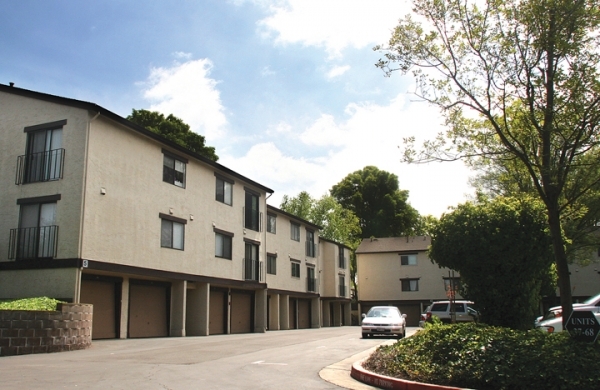Hundreds of Palo Alto property owners could be forced to firm up the shaky foundations of their buildings under a proposal that the City Council will be considering in the coming months.
The city is embarking on a dramatic expansion of its Seismic Hazards and Identification Program, which was adopted in 1986 and created reporting requirements and retrofit incentives for owners of buildings deemed particularly vulnerable. The existing program focuses on the buildings that building officials deem to be particularly vulnerable: those constructed of unreinforced masonry; those built before 1935 and containing 100 or more occupants; and those that went up before 1976 and have 300 or more occupants.
The program requires all building owners to submit engineering reports detailing the buildings' structural deficiencies -- a requirement that every owner has complied with, according to a new report from the Development Services Department. To encourage building owners to undergo retrofits, the law granted them rights to develop up to 2,500 square feet of new building area, either at the site of the vulnerable building or on another downtown property. To date, 21 buildings owners used the density-bonus provision in pursuing renovations.
Yet for all of its success, the program has a few gaping flaws that the new effort aims to address. The scope of the current program is miniscule: it covers just 89 buildings, mostly in the downtown area. And while it encourages retrofits, it doesn't actually require them. According to the city, 23 of the buildings targeted by the 1986 law have not seen any chance since the law was adopted.
Now, Palo Alto is looking to add some teeth to the ordinance and to add four new buildings categories to the three that currently fall under its purview. The biggest addition to the list will be soft-story wood-frame buildings, a category that fared particularly poorly after the October 1989 earthquake in San Francisco and the 1994 tremor in Northridge. These multistory buildings typically have a ground-floor level that is weaker, has fewer partitions and is more flexible than the stories above it, making it more likely to collapse during an earthquake.
According to Rutherford + Chekene, a consulting firm that recently assessed Palo Alto's seismic regulations, soft-story buildings constituted nearly half of the 16,000 housing units that were rendered uninhabitable by the Loma Prieta earthquake in 1989 throughout the Bay Area. The Northridge earthquake left 34,000 units in soft-story buildings uninhabitable. This included the Northridge-Meadows apartment complex, which collapsed during the tremor, killing 16 occupants.
In Palo Alto, there are about 300 soft-story wood-frame buildings, according to the Palo Alto Seismic Risk Assessment Study, a report that Rutherford + Chekene completed last December. Among the biggest questions that the City Council will have to wrestle with in the coming months is what to do about these buildings.
A group of Palo Alto stakeholders, including local developers, contractors and the city's building officials, debated this question over six meetings in 2015 and 2016. And while they didn't come up with a concrete answer, the Seismic Risk Management Advisory Group (as the panel is known) generally agreed that status quo is not an option and that some new requirements should be added, according to meeting minutes.
When surveyed about the subject, 11 of the 12 stakeholders said they are in favor of soft-story retrofits (one member abstained) -- though members had different ideas about what the city's new regulations should entail. All six of the committee members who were not Palo Alto staff agreed that the city should, at the very least, require mandatory evaluations and incentives for retrofits of soft-story buildings -- a similar approach that the city currently takes toward unreinforced masonry.
But the majority of this group thought the city should go even further. One approach that the group considered (and that four of its six voting members favored) is to have a trigger for seismic retrofits, such as property sale or a substantial renovation. Two groups members thought the city should take more stringent measures and include mandatory evaluation and retrofits.
The City Council, for its part, has yet to decide on which route to take on soft-story buildings, though members generally agree that the city needs to do more to encourage retrofits. On Nov. 13, the council unanimously directed staff to begin the process of drafting updates to local regulations, which will be brought to the council's Policy and Services Committee and, ultimately, the full council.
Though the council took the vote on Nov. 13 without any discussion (the action was on the council's "consent calendar," which means it was approved as part of a larger list of non-controversial items), officials have acknowledged in the past that the effort to make the city's buildings more earthquake-resilient will be neither easy nor cheap.
In December 2014, when the council was preparing to fund the Rutherford + Chekene study, City Manager Jakes Keene called program revisions "a potentially big deal" and Assistant Planning Director Jonathan Lait said the council will have to make some difficult decisions as it balances risks to life and property with the high cost of retrofitting a building, which he noted can be "significant in many instances."
Soft-story buildings aren't the only new types that will likely be targeted by the revised ordinance. The report from Rutherford + Chekene identifies three other potentially vulnerable types: tilt-up buildings constructed before 1998; soft-story concrete buildings constructed before 1977; and those constructed from steel-moment frame.
While retrofits could be costly, the Rutherford + Chekene report indicates that doing nothing can be even more so. If no action is taken, losses from a major earthquake could be about $2 billion. A new report from the Development Services Department notes that this figure "does not include lives lost, economic disruption, loss of housing, emergency-services costs, displacement or other effects."
Retrofitting all the structures that were identified in the report would reduce the estimated loss by up to one-half, according to the staff report.
"In other words, losses avoided will exceed retrofit costs, in some categories by fourfold or more," the Development Services Department report states. "This does not suggest that all of the retrofits would necessarily be financially feasible for current building owners, particularly in the absence of incentives and/or favorable financing terms."




Comments
Barron Park
on Nov 30, 2017 at 8:58 am
on Nov 30, 2017 at 8:58 am
Try getting your magnitudes correct -- "If no action is taken, losses from a major earthquake could be about $2 million." -- it's *billion* not million.
Registered user
Palo Alto Weekly staff writer
on Nov 30, 2017 at 9:29 am
Registered user
on Nov 30, 2017 at 9:29 am
Thanks, Reader. Sorry for the error. It's fixed.
Downtown North
on Nov 30, 2017 at 5:33 pm
on Nov 30, 2017 at 5:33 pm
As a minimum, all unrefitted soft-story structures ought to be mandated to post a prominent disclosure of their status and the attendant risks to occupants at each entrance.